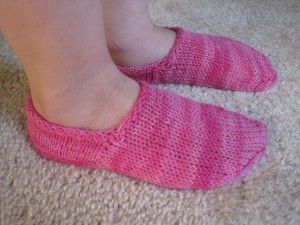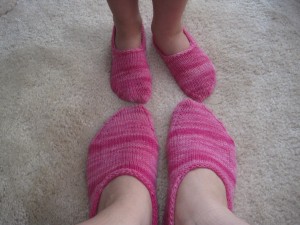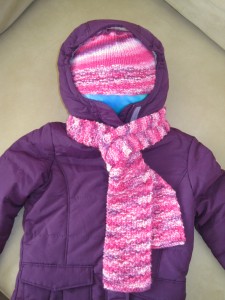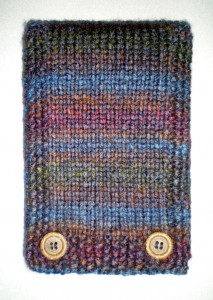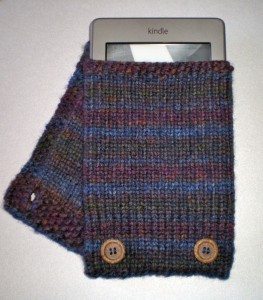I finally made my daughter another pair of bed socks to replace the ones I mistakenly felted in the washing machine. Knitting up another pair also allowed me to double check my pattern so I could finalize it and then make it available for download.
My children’s bed socks are based on Churchmouse Classic’s design for Turkish Bed Socks. The Churchmouse pattern is fantastic and I’ve made many pairs of these lovely little socks for myself, family and friends.1 My daughter wanted a pair of her own, so I adapted the Churchmouse pattern to fit her then 4-year-old feet.
My daughter’s feet have grown since that first pair, so along with double-checking the pattern I was also able to confirm that my instructions for making the socks to fit a child with longer feet are accurate in practice, not just in theory.2 My daughter’s feet are now 6.5″ long, so I knit an extra 4 rounds at the foot, just as my original pattern suggested, and the socks fit perfectly.
While I designed these bed socks for my daughter, they are equally suitable for a boy.3 To make a lovely little pair for your own child, download my pattern here:
- 7 adult pairs and counting: I have two Koigu hanks at the ready–one of mixed greens to make another pair for my mom, and one of red to make another pair for myself. I’m telling you, they are terrific little socks! [↩]
- In writing-up the pattern, I used my gauge and math to extrapolate how many rounds to add. [↩]
- Although he’d probably prefer a color other than pink! [↩]

